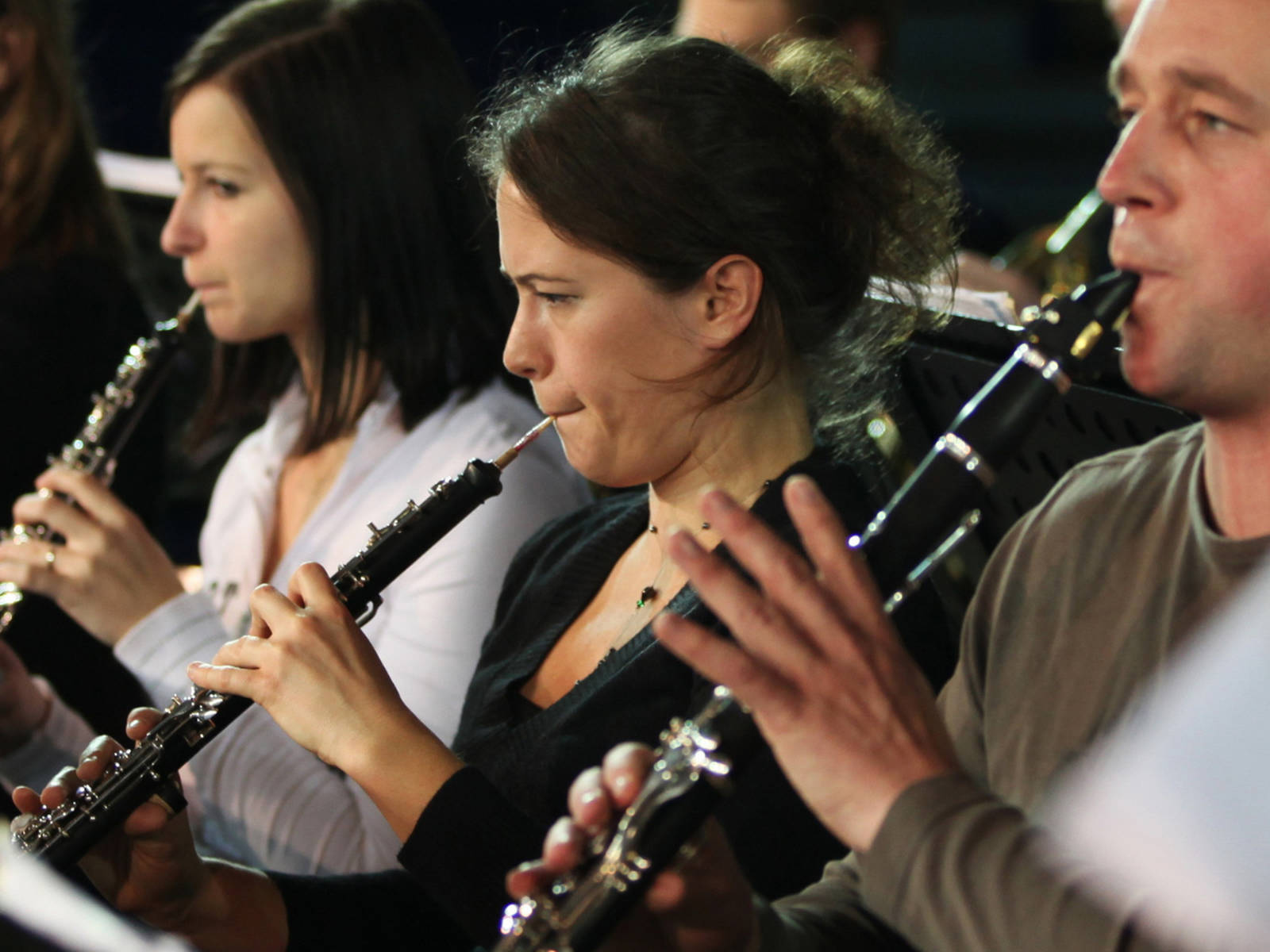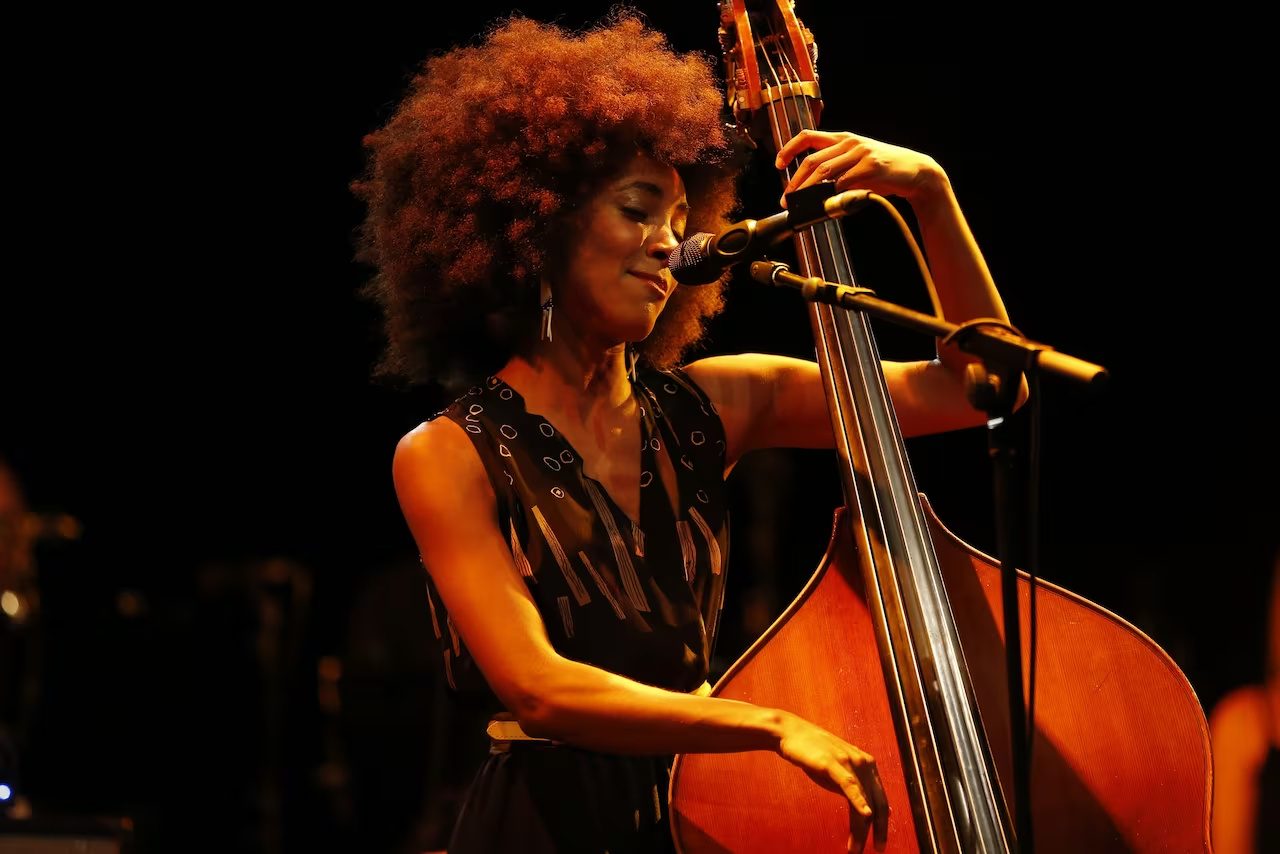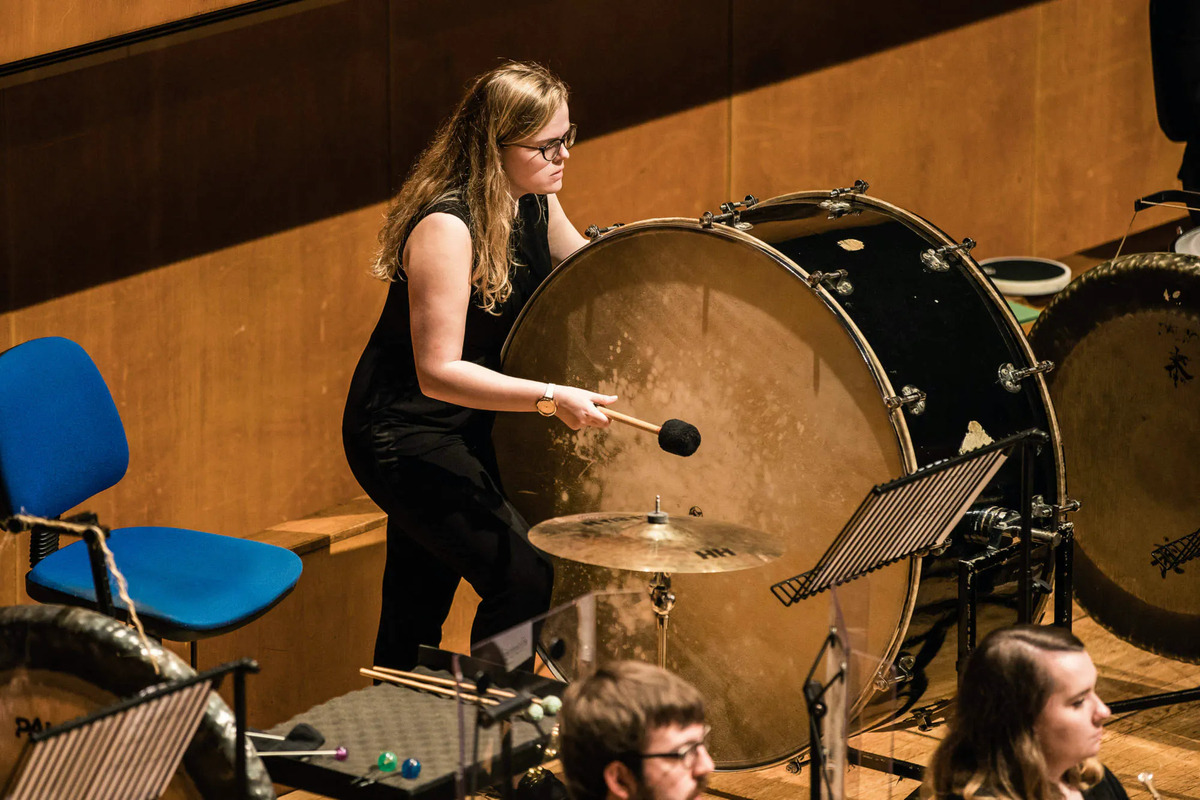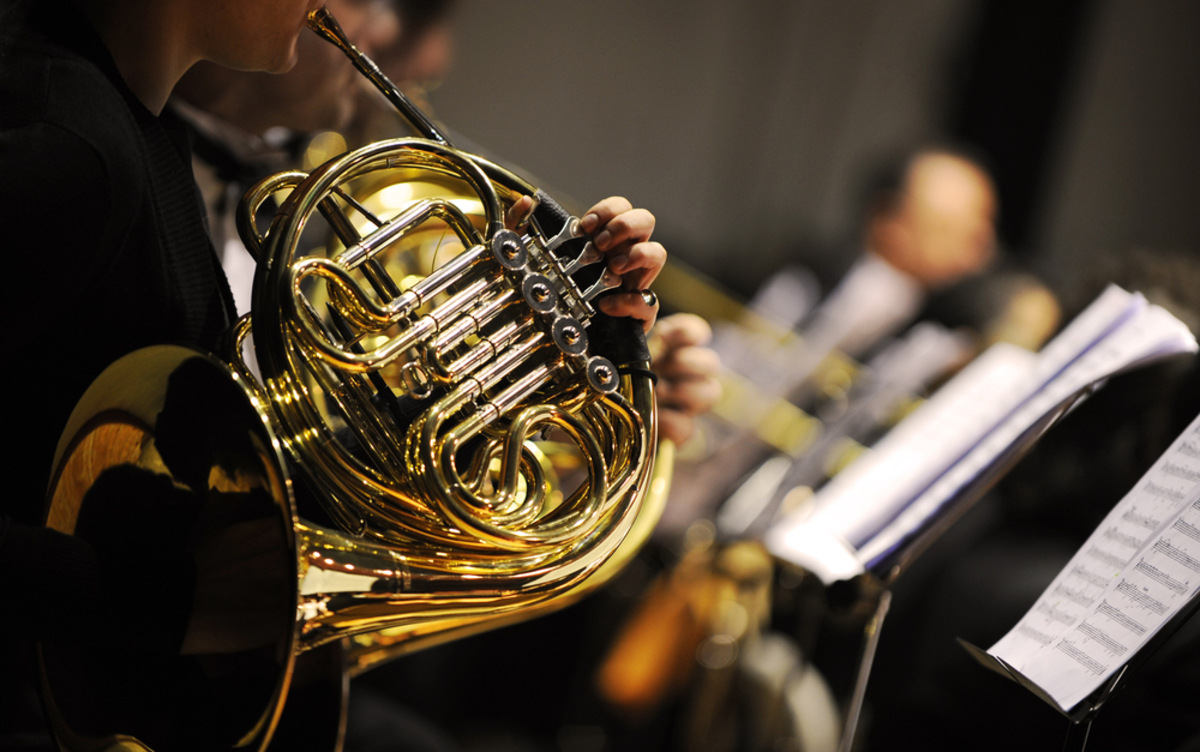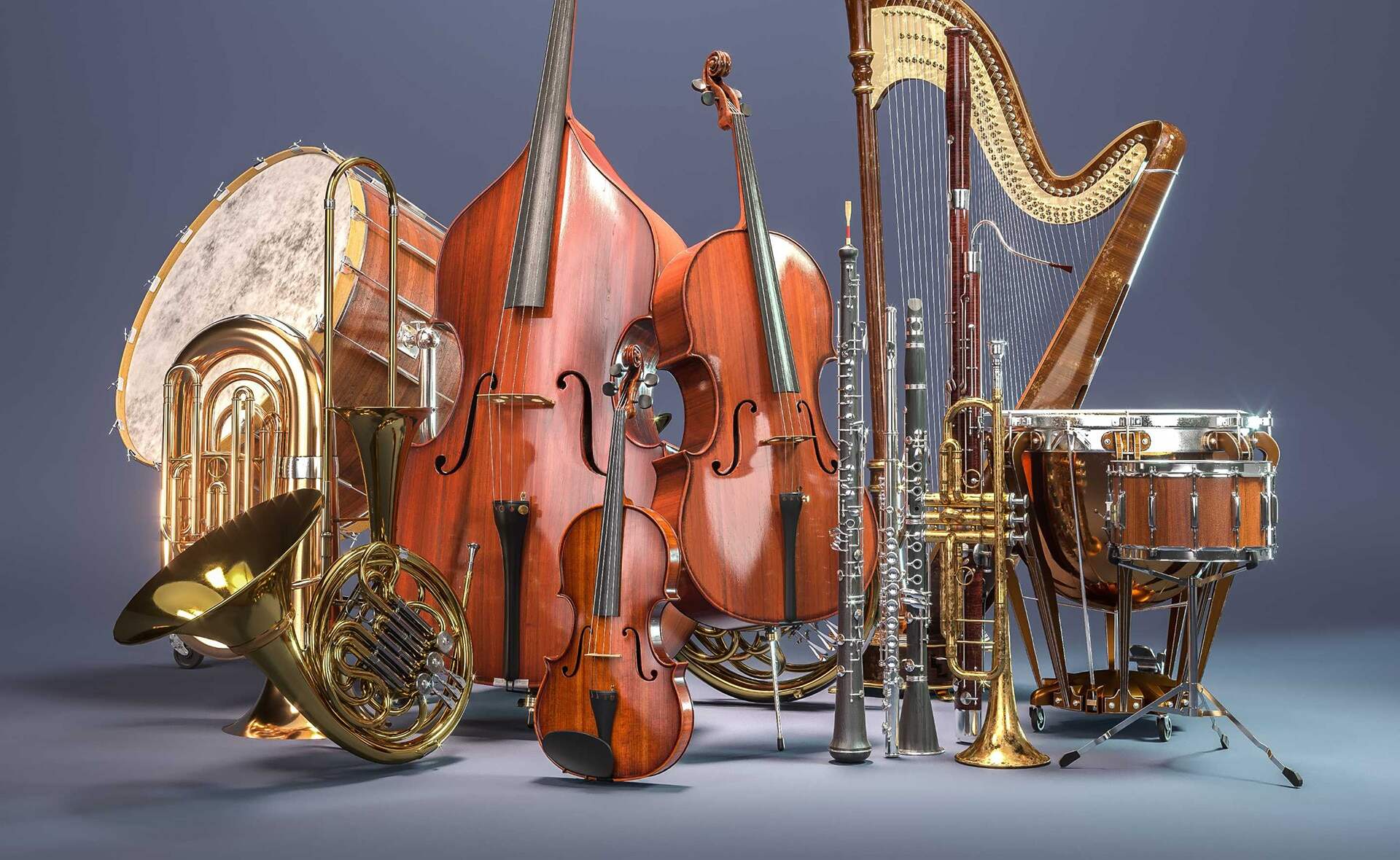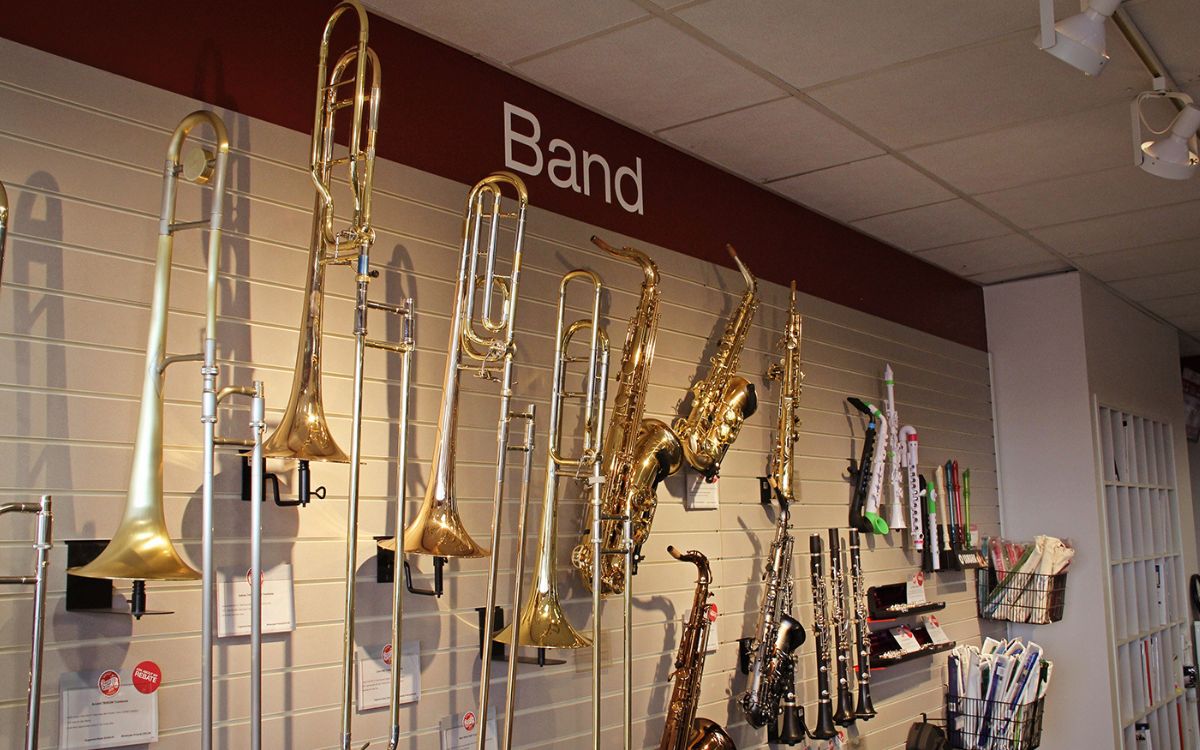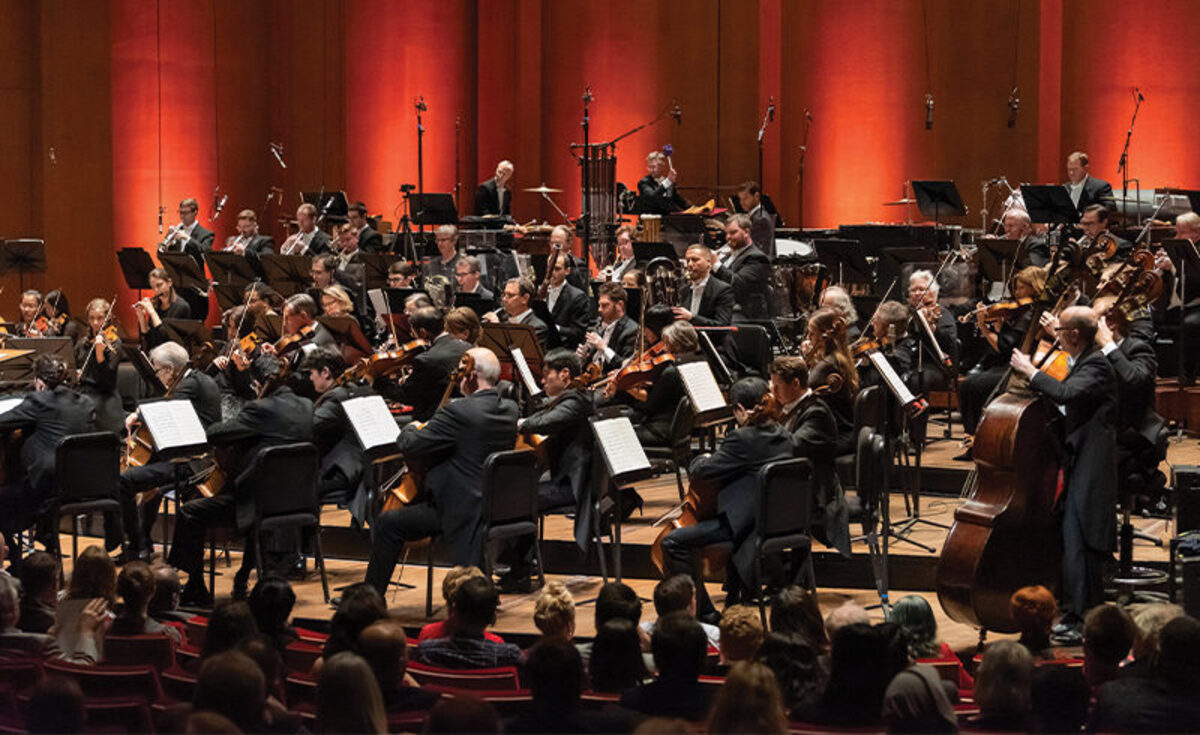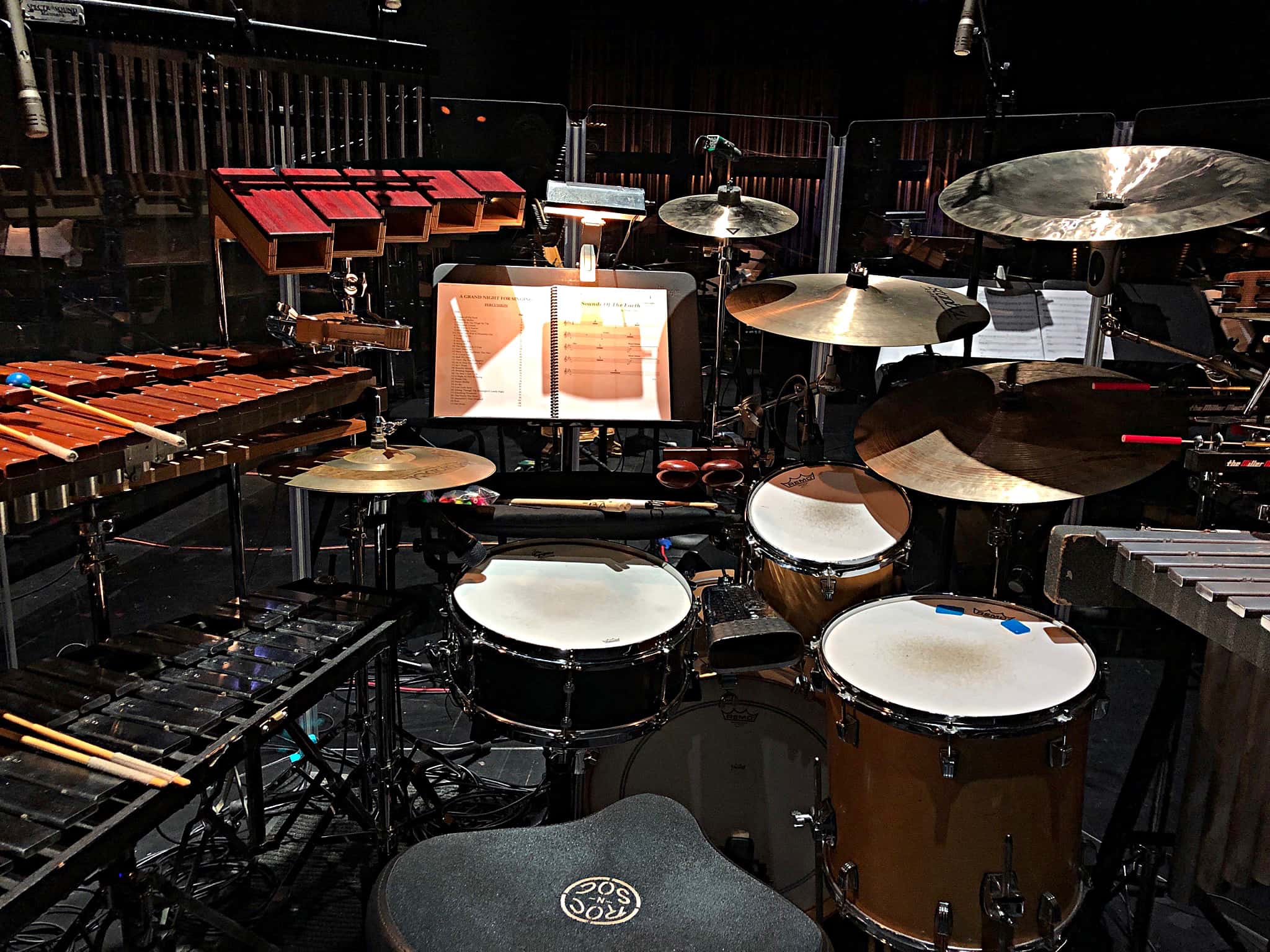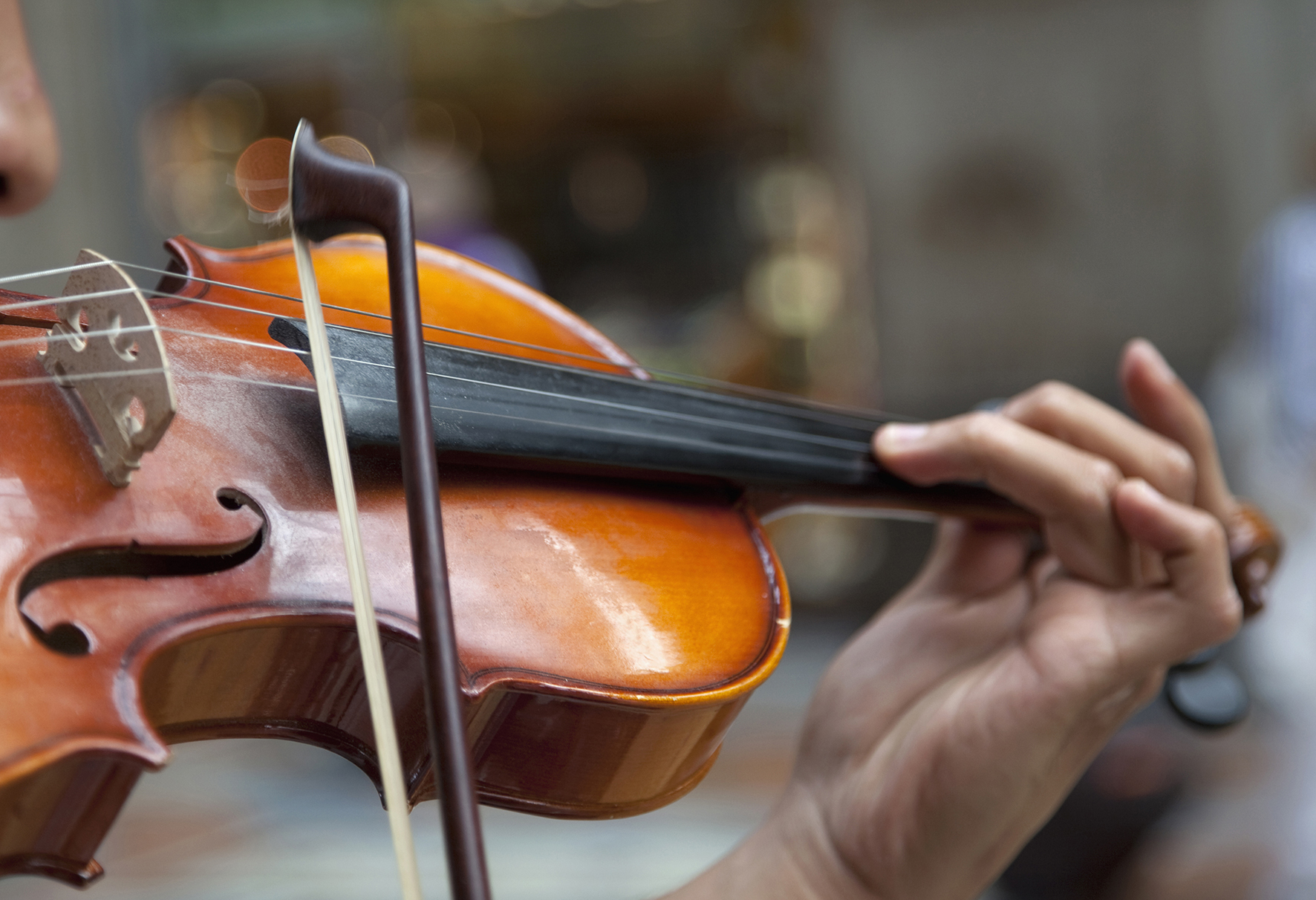Home>Production & Technology>Orchestra>Which Instruments Are Traditionally Placed In The Front Of The Orchestra?
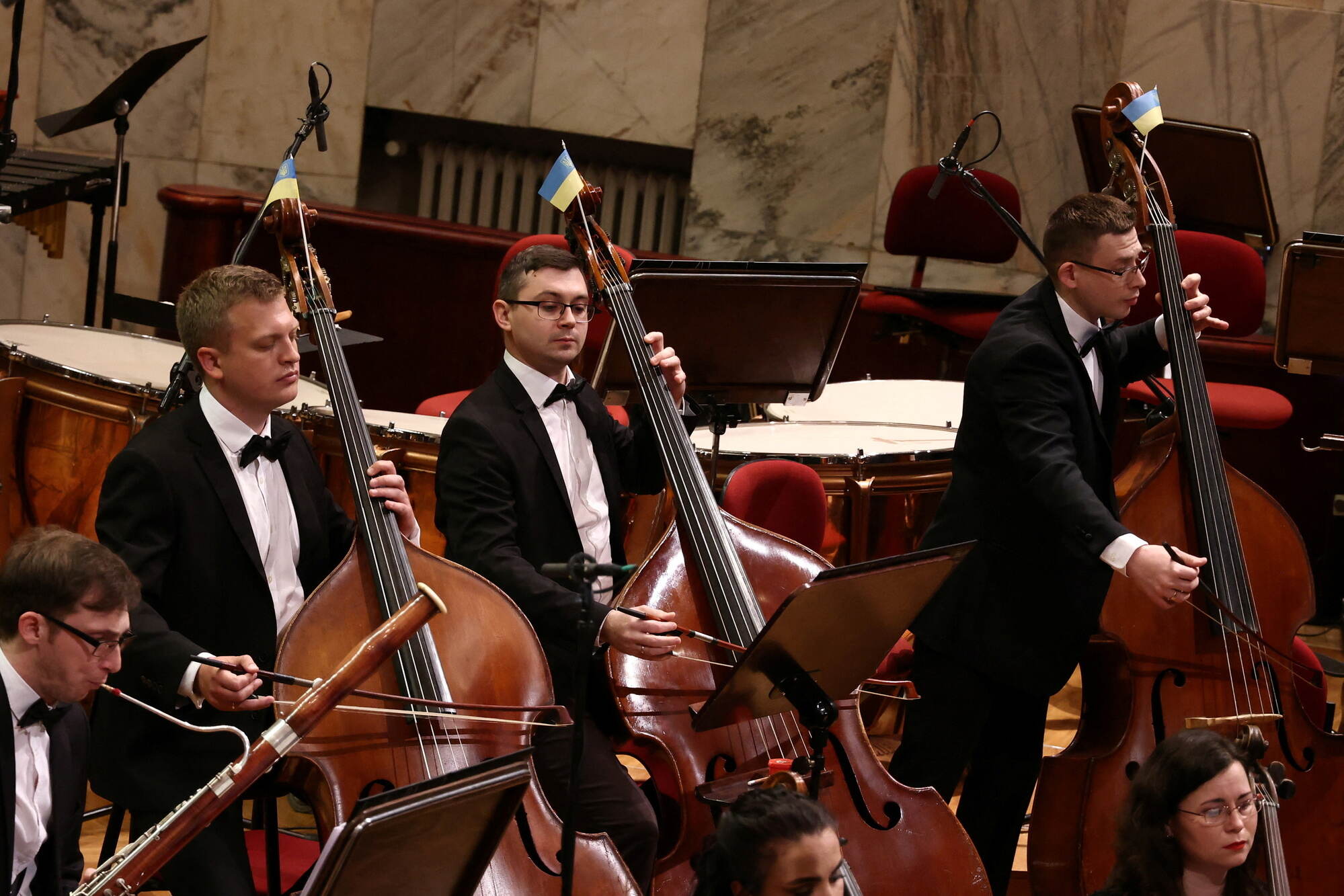

Orchestra
Which Instruments Are Traditionally Placed In The Front Of The Orchestra?
Published: February 25, 2024
Discover the traditional placement of instruments in the front of the orchestra. Learn about the key role of these instruments in creating a harmonious symphonic experience. Explore more with us!
(Many of the links in this article redirect to a specific reviewed product. Your purchase of these products through affiliate links helps to generate commission for AudioLover.com, at no extra cost. Learn more)
Table of Contents
Strings
The string section of the orchestra is a fundamental and captivating component of its ensemble. Comprising a diverse range of instruments, the strings bring depth, emotion, and richness to the orchestra's sound. Traditionally, the string section is positioned at the front of the orchestra, closest to the audience, allowing their melodic and harmonic contributions to resonate with clarity and impact.
Violins
At the forefront of the string section are the violins, divided into first and second violins. The first violins typically play the melody, while the second violins provide harmonies and counter-melodies. Their agile and expressive nature allows them to carry the emotional weight of the music, often soaring above the rest of the orchestra with their sweet and resonant sound.
Violas
Slightly larger than the violin and possessing a deeper, mellow tone, the violas add warmth and richness to the string section. Often providing crucial inner harmonies and countermelodies, the violas contribute to the overall depth and texture of the orchestral sound.
Cellos
With their soul-stirring and sonorous tones, the cellos play an indispensable role in the string section. Positioned between the violas and the double basses, the cellos often carry the weight of the lower melodies, infusing the music with a profound and resonant quality.
Double Basses
As the largest and lowest-pitched members of the string family, the double basses provide a solid foundation for the entire orchestra. Their deep, rumbling tones resonate through the ensemble, grounding the music with a powerful and majestic presence.
The collective synergy of the string section, with its intricate interplay of melodies, harmonies, and textures, forms the backbone of the orchestra's sonic tapestry. When positioned at the front of the orchestra, their proximity to the audience allows for an intimate and immersive musical experience, drawing listeners into the emotive and evocative world of orchestral music.
Woodwinds
The woodwind section of the orchestra is a fascinating and versatile group of instruments, each with its own unique timbre and expressive capabilities. Positioned just behind the string section, the woodwinds contribute a diverse range of colors and textures to the orchestra's overall sound. From the haunting melodies of the flute to the resonant depths of the bassoon, these instruments play a vital role in shaping the sonic landscape of the orchestra.
Flute
The flute, with its shimmering and agile sound, often takes the lead in the woodwind section. Capable of producing delicate, ethereal tones as well as lively, spirited melodies, the flute adds a sense of airiness and fluidity to the orchestral sound. Positioned on the left side of the conductor, the flute players' intricate finger movements and breath control bring forth a captivating array of musical expressions.
Oboe
With its distinctive and poignant voice, the oboe holds a prominent position in the woodwind section. Known for its piercing and expressive quality, the oboe often carries poignant melodies and intricate solos, evoking a sense of longing and introspection. Positioned next to the flute, the oboist's skillful manipulation of the double reed creates a rich and resonant sound that resonates throughout the orchestra.
Clarinet
The clarinet, with its warm and versatile timbre, adds depth and richness to the woodwind section. Positioned between the oboe and the bassoon, the clarinet's mellifluous tones often blend seamlessly with the rest of the orchestra, providing a sense of warmth and cohesion. From soulful solos to agile, nimble passages, the clarinet's expressive range enriches the orchestral palette with its evocative melodies.
Bassoon
As the lowest-pitched member of the woodwind family, the bassoon imparts a deep and sonorous quality to the orchestra's sound. Positioned at the far right of the woodwind section, the bassoon's resonant tones provide a solid foundation, adding weight and gravity to the ensemble. Whether delivering majestic bass lines or evocative solos, the bassoon's expressive capabilities contribute a sense of depth and grandeur to the orchestral performance.
The woodwind section, with its diverse array of instruments and expressive potential, plays a pivotal role in shaping the orchestral sound. Positioned just behind the strings, their proximity to the audience allows for the intricate nuances and emotive qualities of the woodwinds to resonate with clarity and impact, creating a captivating and immersive musical experience.
Brass
The brass section of the orchestra exudes power, majesty, and grandeur, commanding attention with its resplendent and commanding sound. Positioned prominently at the front of the orchestra, the brass instruments form the triumphant heralds of the ensemble, their regal tones resonating with strength and authority.
Trumpets
At the forefront of the brass section stand the trumpets, renowned for their brilliant and penetrating sound. Positioned on the right side of the conductor, the trumpeters unleash a dazzling array of fanfares, triumphant melodies, and regal flourishes, adding a sense of grandeur and exuberance to the orchestral performance. Whether soaring above the ensemble with resplendent fanfares or weaving intricate melodic lines, the trumpets' commanding presence captivates audiences with their bold and triumphant sound.
French Horns
With their rich, warm, and enveloping timbre, the French horns bring depth and nobility to the brass section. Positioned next to the trumpets, the horn players infuse the music with a sense of warmth and grandeur, their mellifluous tones adding a regal and expansive quality to the orchestral sound. Whether evoking pastoral serenity or resounding with heroic fanfares, the French horns' expressive range and lyrical melodies imbue the music with a sense of nobility and grandeur.
Trombones
The trombones, with their robust and resonant sound, lend a sense of power and gravitas to the brass section. Positioned between the French horns and the tuba, the trombonists unleash commanding bass lines, majestic chorales, and stirring harmonic support, imbuing the music with a sense of depth and authority. Whether delivering majestic fanfares or adding weighty contrapuntal textures, the trombones' commanding presence adds a sense of grandeur and resonance to the orchestral performance.
Tuba
As the largest and lowest-pitched member of the brass family, the tuba provides a solid foundation for the entire ensemble. Positioned at the center of the brass section, the tuba player's deep, resonant tones resonate through the orchestra, imparting a sense of weight and majesty to the music. Whether delivering powerful bass lines or adding a sense of grandeur to the orchestral sound, the tuba's commanding presence anchors the ensemble with its majestic and imposing sound.
The brass section, positioned at the forefront of the orchestra, commands attention with its regal and commanding sound, adding a sense of grandeur, power, and majesty to the orchestral performance. With their resplendent fanfares, noble melodies, and commanding presence, the brass instruments captivate audiences with their triumphant and majestic sound, creating a captivating and immersive musical experience.
Percussion
The percussion section of the orchestra is a dynamic and multifaceted ensemble, adding rhythmic drive, textural depth, and dramatic impact to the orchestral sound. Positioned at the back and center of the orchestra, the percussion instruments form a vibrant and versatile powerhouse, infusing the music with a diverse array of colors, timbres, and rhythmic patterns.
Timpani
At the heart of the percussion section stand the timpani, also known as kettle drums. These majestic instruments, with their resonant and thunderous tones, provide a sense of grandeur and authority to the orchestral sound. Positioned at the center rear of the ensemble, the timpanist skillfully manipulates the tension of the drumheads, producing a rich and regal sound that reverberates through the orchestra. Whether delivering dramatic rolls, majestic accents, or rhythmic underpinnings, the timpani's commanding presence adds a sense of depth and gravitas to the orchestral performance.
Snare Drum
The snare drum, with its crisp and incisive sound, brings a sense of rhythmic vitality and precision to the percussion section. Positioned to the left of the timpani, the snare drummer executes intricate rhythms, lively marches, and dramatic accents, infusing the music with a sense of energy and drive. Whether delivering spirited rolls, brisk rhythms, or dramatic crescendos, the snare drum's dynamic and versatile sound adds a sense of rhythmic urgency and flair to the orchestral performance.
Cymbals
The cymbals, with their shimmering and explosive character, contribute a sense of drama and brilliance to the percussion section. Positioned to the right of the timpani, the cymbalist creates a dazzling array of crashes, splashes, and crescendos, adding a sense of color and impact to the orchestral sound. Whether unleashing thunderous climaxes, delicate shimmers, or dramatic accents, the cymbals' vibrant and expressive sound enhances the orchestral performance with a touch of theatricality and grandeur.
Other Percussion Instruments
Beyond the timpani, snare drum, and cymbals, the percussion section encompasses a diverse array of instruments, including the bass drum, triangle, tambourine, glockenspiel, xylophone, and an assortment of auxiliary percussion. Each instrument contributes unique timbres, textures, and rhythmic nuances, collectively enriching the orchestral sound with a kaleidoscope of sonic colors and expressive possibilities.
The percussion section, positioned at the back and center of the orchestra, serves as a dynamic and vibrant force, infusing the music with rhythmic vitality, dramatic impact, and a diverse array of colors and textures. With their commanding presence, expressive versatility, and rhythmic drive, the percussion instruments create a captivating and immersive musical experience, adding depth, energy, and dramatic flair to the orchestral performance.

